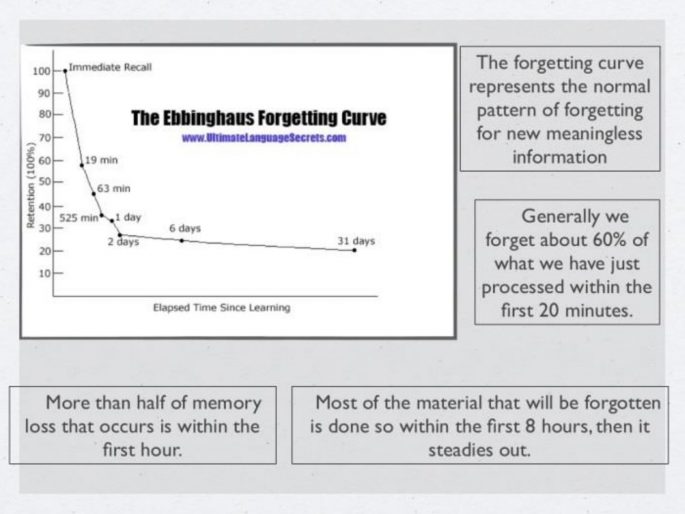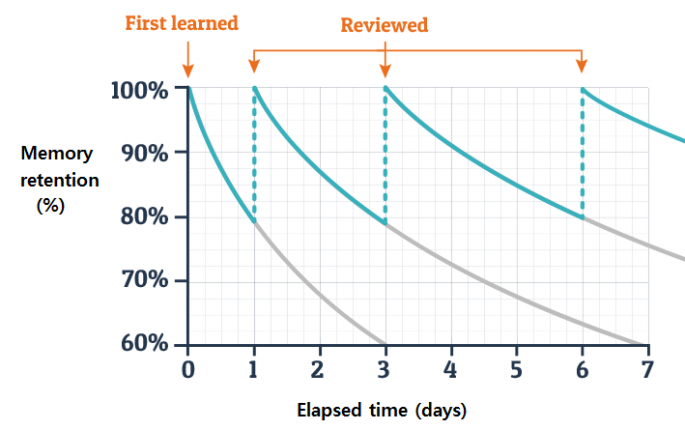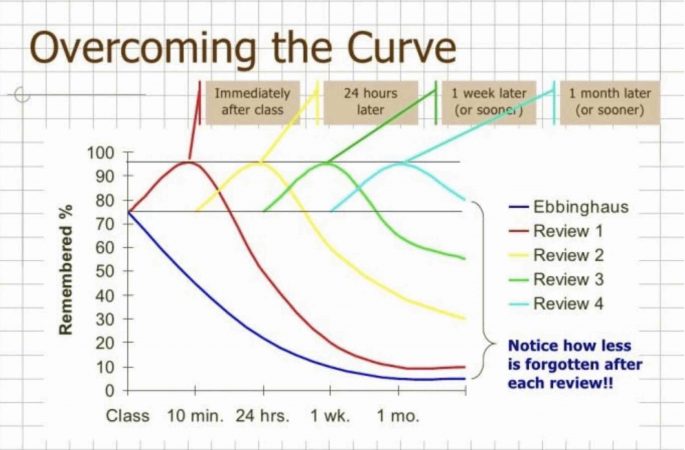Research material by Dr. John Wittmans (CSU Stanislaus)
Hermann Ebbinghaus (1850-1909) was a German psychologist who founded the experimental psychology of memory. Ebbinghaus’ research was groundbreaking at the time, and his work (though he was not a proliferate writer) was generally well-received.
In recognition of his work in psychology, the “forgetting curve” – the loss of learned information – is sometimes referred to as the “Ebbinghaus Forgetting Curve.”
The process by which forgetting occurs
This graph shows the process by which forgetting occurs. According to this research, people tend to forget rather quickly after learning material then forgetting slowly levels out. The implications of this for students are obvious—a day or two after attending class or reading a chapter or article, students will have forgotten approximately 75% of what was learned. Moreover, most of that forgetting happens within the first hour.


Now take a look at the red line. This line shows a dramatic increase in memory if students review material. It also shows that, without additional intervention, one day after material is learned, content is lost, and one week after, recall is almost as if the review never happened at all.

However, although the forgetting curve is a natural process, the process itself can be disrupted. That is, although it is natural for people to forget much of what they have learned immediately following an experience, simple processes can be used to slow down forgetting and to help us retain much of the information we will need to recall at a later date (such as test time).
The green line in the graph shows the hypothetical place where the forgetting curve would start if we had the ability to “remember everything after a lecture”. The blue line shows where the forgetting curve actually starts – around 75%.
How to retain information learned?
So, is there a way to maintain the initial recall after review? Yes, you simply have to keep at it. While an initial review of material will help you remember in the short term, reviewing material multiple times and at different intervals will help you retain it for much longer.
The graph shows how the review affects memory. You can see that every time you review material you retain much more information, and your forgetting curve steadies out at a much higher level. Each time you review material you take much more away. Research indicates that the minimum amount of reviews is three.
How Food Safe Passport can help you
Our purpose-built induction training helps reduce:
- non-conformances
- product-on-hold, and
- time and money wastage, when operators and temporary staff competency skills cost money and valuable time as a result of re-work, down-grades, and dumping.
Our induction training videos offer the ability for operators and staff to watch and learn several times, thereby increasing the possibility of memory retention from 60% to 90% plus.